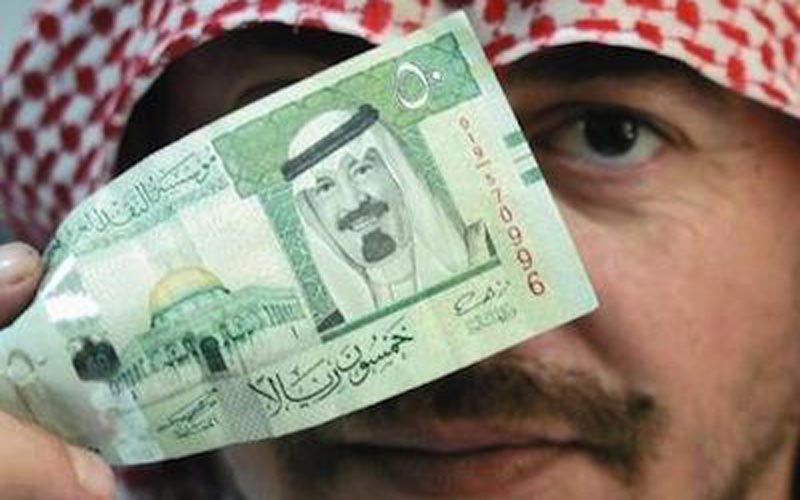The latest monthly statistical data from Saudi Arabia Monetary Agency (SAMA) show the cumulative year-to-date drop in its net foreign assets has reached a large $45.9 billion (Dh168.6 billion) at the end of April this year.
Analysts say the slump in reserves could be attributed to lower growth in oil revenues, increased government hand outs to its employees, allocation to projects directly funded by the government and increased military expenditure.
“The cumulative year-to-date drop in SAMA net foreign assets has reached a large $45.9 billion. This move is largely explained by the liability side of the SAMA balance sheet, in our view. In effect, deposits of the central government at SAMA dropped by a large $14.3 billion to $313 billion in April, after a whopping $30.6 billion drop in February due to the Royal handouts,” said Jean-Michel Saliba, MENA Economist at Bank of America Merrill Lynch.
The cumulative year to- date drop in deposits of the central government at SAMA has reached a large $63.8 billion. Unlike previous months, this month’s drawdown is nearly fully explained by a large $19 billion drawdown in central government deposits allocated to projects, the largest on record since data was made available. This was somewhat offset by a concurrent $7.5 billion increase in government current deposits.
Despite the increased drawdown form the reserves, overall liquidity in the financial system remained strong last month thanks to the rebound in oil prices. Key banking sector data from SAMA suggests liquidity levels continue to hold up with money supply growing at 9.4% in April compared to 10.2% in March.
Bank deposits grew by 0.4% month on month and 8.9% year on year in April. Demand deposits grew strongly by 2.2% month on month in April. This has been offsetting contractions in time and saving deposits, and was helped by the rebound in FX [foreign exchange] deposits of government entities which grew by 8.6% month on month in April. Loans to private sector decelerated to 9.4% year on year in April from 10.3% in March.
While the FX deposits from the government and government related entities continue to support the overall liquidity levels, as firmer allocation to strategic capex pipeline is maintained. But future diversion of funds for other needs including current spending or military spending could apply pressure on liquidity in the financial system with April marking the full-month since the start of the Yemen campaign.
Despite the visible drop in government deposits with SAMA, analysts do not anticipate any sharp pullback in government spending.
“Economic activity is likely to remain cushioned in the near-term but at the cost of wide and unsustainable fiscal deficits, in our view. The absence of material fiscal adjustment is likely to imply a need for a sharper adjustment down the line if oil prices remain low for long, in our view,” said Saliba.
The budget deficit is estimated at about 17% of GDP if the oil prices are to average around $55 per barrels while the GDP is expected to grow at 3% this year.
The rapid drawdown in reserve assets suggests that domestic borrowing appears increasingly on the cards.
Source: Gulf News












